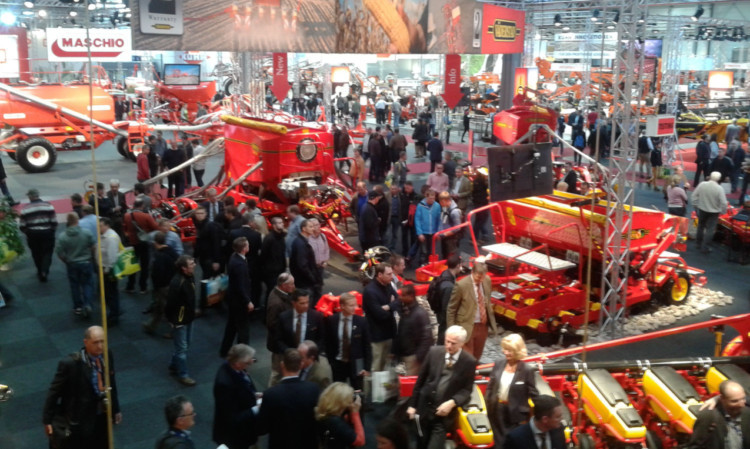Agritechnica organisers claim their biennial farm machinery show is the largest in the world, and there is little reason to disbelieve them.
For the first time all 27 exhibition halls here at the Hanover fairground are full. That is more than 25 hectares of heated indoor space on a site that covers a full 40 hectares.
This compares to the average farm in the EU at around 12 hectares.
Moving around such a large showground needs good planning and stamina. Yesterday morning one or two of the more experienced showgoers could be seen gliding around smugly on shiny aluminium versions of children’s scooters. This writer looked on them with derision early in the day but by evening would gladly have mugged one just to have the use of wheeled transport.
Each exhibition hall could swallow the old Smithfield show site at Earls Court with ease. But it is not only the space that is vast, it is the size of much of the machinery. Such huge tackle doesn’t seem to fit with the above-mentioned EU average farm size, but of course there is more than that to it.
Firstly, this is a global show and there will be buyers here from every continent.
There are also huge farms in Germany, mostly to the east of Hanover, and of course in eastern Europe and the Ukraine. On the opening day I couldn’t see much evidence of Russian buyers but was told not to worry, they would be here in droves before the end of the week.
There are other markets, too. Krone, the German field machinery manufacturer, claims to have exported 10 of its giant 1,000hp Big X self-propelled forage harvesters to China for work in maize.
There are risks attached, however, with reports from another company that forage wagons looking suspiciously like their own but in different colours had been seen at work in Chinese fields.
Most buyers, of course, wouldn’t bother to copy any of the machines here. They want the originals. They need reliability and cutting-edge technology, and increasingly that comes from German manufacturers.
The French, Italians and Scandinavians hold their own, too, with the UK a well-respected but rather minor player.
There are a number of other reasons for exhibiting such large machinery. Obviously the drama of scale draws in the punters.
Standing on a gallery above the Vaderstad stand it was interesting to watch farmers drawn to the largest 12-metre grain seeders like moths to a flame.
After a bit of tyre kicking and much daydreaming they would eventually gravitate to the three-metre machine they could actually afford, but only when it came on the second-hand market.
This process took about 10 minutes and could be happily repeated many times during the day.
But manufacturers can’t afford to make large machines just to act as bait. They have to sell them in reasonable numbers, and it transpired yesterday that they do, and that many of the customers are in western Europe.
Contract operations have become very popular, for example with sugar beet growers.
Sometimes the contractors are individuals, but often they are machinery sharing co-operatives.
The self-propelled behemoths which harvest the European sugar crop can weigh 60 tonnes loaded and cost well over £600,000.
The self-propelled loaders which fill the beet into lorries from roadside clamps are equally impressive and not much less expensive.
All this equipment is expected to work 24 hours a day for seven days a week during the lifting campaign.
It is impressive stuff, but at the back of it lies an underlying shortage of labour on European farms. The machinery has to take the strain.
